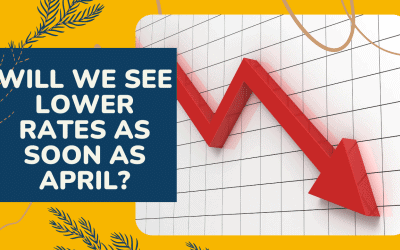Recent weeks have witnessed a surge in mortgage rates at various lenders, including several of the Big-5 Banks in Canada, as the Government of Canada’s 5-year bond yield experiences a significant increase. This rise in bond yields, currently at a 14-month high of 3.58%, has prompted mortgage rate hikes, primarily targeting shorter terms. The shifting mortgage preferences towards shorter-term fixed-rate terms are influenced by borrower expectations of rate cuts by the Bank of Canada due to a looming recession.
Funding Costs and Bond Yields
The most recent surge in bond yields is a result of concerns over the U.S. debt ceiling and a small inflation uptick in Canada. By the time this round of increases is complete, we may see a total increase of about 40 to 60 basis points. As bond yields strongly influence fixed mortgage rates, the increased bond yields have driven up mortgage rates.
The chart below shows the last year of the Government of Canada’s 5-year bond yield and you can see how volatile it is! Each of the peaks represents times when fixed rates have been high, and each dip where rates have been lower.
 source: Investing.com Canada 5-Year Bond Yield
source: Investing.com Canada 5-Year Bond Yield
Concerns over U.S. Debt Ceiling and Inflation
There is growing apprehension that the U.S. may default on its debt obligations if Congress fails to pass a bipartisan deal to raise the country’s debt ceiling of $31.4 trillion. Additionally, Canada’s consumer price index experienced a slight increase from 4.3% to 4.4% in April, raising concerns for the Bank of Canada in its efforts to bring inflation back down to the targeted 2%.
The Significance of Spreads
The 1-year bond yield is now 126 basis points higher than the 5-year yield (May 30 @ 8:30am MDT 1-year, 5-year), leading to rising rates for shorter-term fixed mortgages. Stress in the overnight funding markets, coupled with banks pricing in risk across various lending areas, including residential and commercial sectors, could result in a liquidity crunch. While the U.S. debt ceiling talks may contribute to this phenomenon, spreads have not reached such levels in previous debt ceiling debates.
The Outlook and Potential Impact
By the fall of 2023, the system may face shocks that disrupt liquidity. Despite possible future declines in bond yields and the prime rate, banks will likely maintain elevated spreads to accommodate presumed risks and credit tightness. While rising rates alone do not directly cause a recession, the speed of the rate increases and the inversion of the yield curve serve as indicators of an impending economic downturn.
Conclusion
The recent surge in mortgage rates in Canada, driven by an increase in bond yields, is prompting discussions among borrowers and industry experts. The combination of concerns over the U.S. debt ceiling and rising inflation has contributed to the rate hikes. Moreover, the widening overnight spreads, particularly for shorter terms, raise concerns about liquidity and potential impacts on the overall system. As the market continues to evolve, borrowers and lenders alike will closely monitor these factors and their influence on mortgage rates.
More to come…






0 Comments